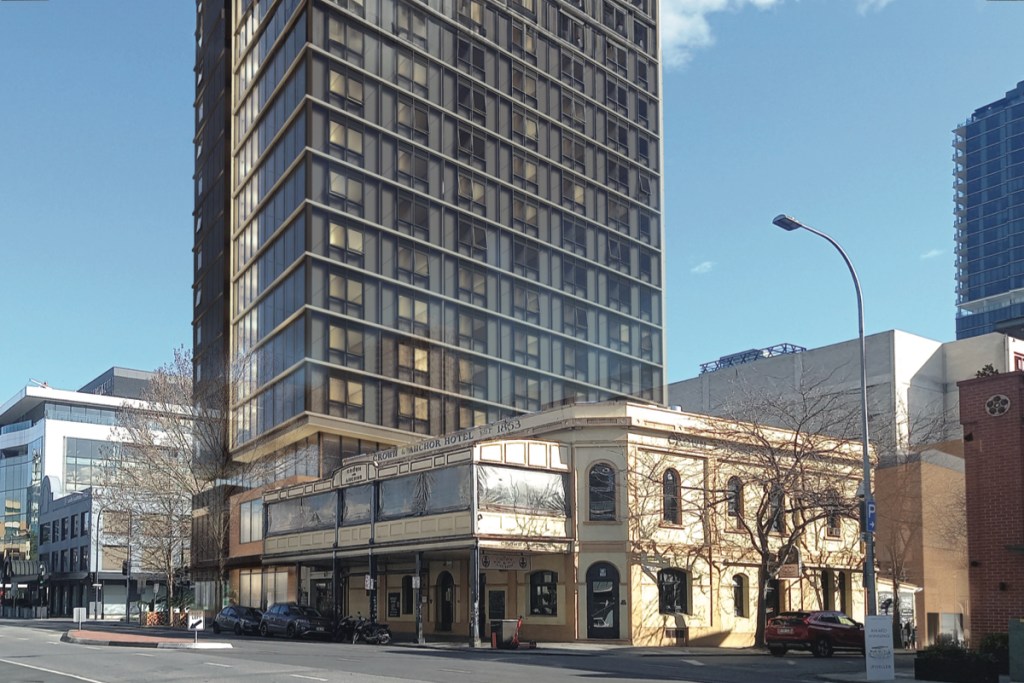The godfather of Australian beer, Chuck Hahn, is not done yet

- by Admin
- April 16, 2024

“Nowadays one of your drinking companions is likely to demand a bottle of Corona, imported from Mexico, with a wedge of fresh lemon in the bottleneck … I kid you not,” the article reads.
However, Hahn told the paper his aim with Hahn Premium Lager was to make fresh, traditional beer. “Good beer is meant to be savoured, not swilled,” he said.
Nowadays, anyone who has ever tried a Hahn, James Squire, Kosciuszko, Malt Shovel, Eumundi or Lord Howe Island-branded beer has directly sampled Chuck’s handiwork. He is regularly described as the godfather of Australian beer. “You know you made it in Australia when you see your name in the gutter,” he laughs.
He has been chief brewer for global beverage giant Lion, which, incidentally, now owns the Hahn, James Squire, Kosciuszko, Malt Shovel and Eumundi brands.
Anthony Albanese, then opposition leader (and not opposed to an eponymous beer himself), joined a celebration of Chuck’s 50th year in brewing in 2021. Chuck is where brewing meets power.
Craft boom
Chuck & Son’s brewery is on the top floor of a 1960s industrial building. It has polished concrete floors, sturdy wooden chairs, Chesterfield couches (bought at auctions), antique surgical lights and a corrugated iron wall from a winery in the Hunter Valley.
It will hold more than 200 patrons when it opens in mid-May, with a permanent food truck on a large patio serving as Chuck’s Kitchen, run by local catering business Dope Fusion.
Chuck & Son’s will start with four foundation styles: an American Amber, an Original Pilsener, a Two-World Pale Ale and a Radler (traditionally, a mix of lemonade and beer). The pale ale includes Galaxy and Ella hops from Australia, and Citra and Mosaic hops from the US – hence, two worlds.
“There were only 35 breweries in Australia when we started up the Hahn Brewery [in 1987],” Chuck says. “There are 700 now. In the last 10 years, it’s doubled. It’s amazing, the competition now.”
Which raises the obvious question of what gap in the competitive market Chuck & Son’s will fill? There are 13 breweries on the Inner West Ale Trail alone, and it is a tough market. Nearby St Peters institution Willie the Boatman was acquired in March by UK brewery Powder Monkey. Price inflation, tax bills, cost of living and talent shortages have hit hard.
Father and son on the new brewery’s floor. Louise Kennerley
Both Chuck and Scott acknowledge the market is not good. But they’re confident simple, popular styles can cut through to a generation that is increasingly alcohol and carb-averse. For one, Chuck quickly says there’ll be no lactose-filled, donut-flavoured beers.
Scott says: “It’s nostalgic craft if you like. That consistent part of the craft beer-fridge lineup. We do see an opportunity in terms of craft low-carb. Getting a little more flavour, but knowing that it’s that little bit better for you in comparison to others.”
Lo-cal and Local
Chuck helped brew some of the first low-carb beers in the US. Brewing lower calorie – the pair describe it as “lo-cal” and local beer – appears to be the market for Chuck & Son’s. “There are more calories in alcohol per gram than there are carbohydrates. There are 6.9 calories per gram of alcohol, four calories per gram of carbohydrate,” Chuck says.
“So when you make a low-carb, low-calorie beer, you’re bringing both those parameters down. And the trick is to be able to deliver on flavour because alcohol is always a flavour enhancer. That’s why it’s so tricky to make a really good-tasting 3.5 [per cent] alcohol craft beer.”

Chuck Hahn making Hahn Premium Lager at his Camperdown brewery in June 1988. Paul Wright
Despite the boom in craft beers, alcohol consumption has been declining more broadly for decades in Australia. “We recognise that the palette is changing,” Scott says.
Chuck and Scott do not say whether the plan is, once again, for Chuck & Son’s to be acquired by Lion. Nor will they say how much has been spent on the large venue, two copper and stainless-steel kettles, and set of 1500-litre tanks. “We do have big plans. But we’re only early on in the journey. And we’re just getting started,” Scott says.
So far, funding has been limited to friends and family who work in “accounting, architecture and more supply chain” areas, Scott says. There are 10 or 11 groups who’ve chipped in. “It is absolutely expensive to set up. We’ll put it that way.”
At the back of the brewery is a Grainfather system – the semi-professional set-up prized by home brewers that makes about 30 litres of beer. Chuck still tinkers with his recipes there before putting them to work on a bigger scale.

A promotional shot for Chuck & Son’s Brewing Co. “We do have big plans,” says Scott Hahn of the future.
“I’ve always said that wine gentrifies but beer unifies. That unification, that social mobility of beer – that’s what we’re looking at here with a huge space,” he says.
“People will come in and enjoy the beers, we can get the brands established. People can come enjoy the beer here, responsibly. Then take some home and enjoy it irresponsibly.”
Read next from Drinks with Max Allen
The Latest News
-
December 22, 20242024 runner-up Qinwen Zheng pulls out of Australian Open lead-in event
-
December 22, 2024‘I want to be out there’: Webster’s long wait for Test debut could be over with Marsh’s all-round capability clouded
-
December 22, 2024China’s Zheng to skip United Cup, needs ‘extra rest’ ahead of Australian Open
-
December 22, 2024India boycott press match after media battles
-
December 22, 2024Australian Open runner-up Zheng out of United Cup


